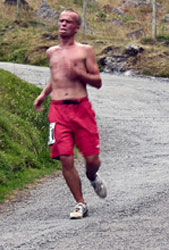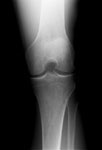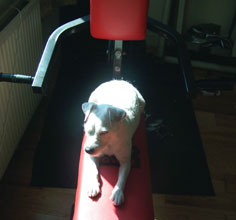The Stress Fracture

A stress fracture is an over use injury often experienced by runners who are, shall we say, overzealous and trying to do too much, too soon. They can happen in any bone but it is usually the weight bearing bones in the feet, legs and ankles which suffer the most as they take the impact force of running
Our bones are very clever though - they can regenerate and repair on a daily basis in response to everyday activity, bones respond to exercise which they have become conditioned to cope with over time, but…
Why is there always a ‘but’?
If you try doing too much running before you are ready, eventually tired muscles will transfer the strain and impact forces to the bones; if this continues the bone’s repair system cannot keep up and tiny fractures are caused
But relax… whether you are recovering from a bone fracture or interested in preventing one in the first place, there are things you can do – training techniques, strengthening etc. We’ll look at this further into the page
Running Tips HQ:
You will often hear about the 10% rule used in training - this is a safe amount to increase your weekly mileage. This will give your body chance to respond to the stress of running and become stronger - but minus the injury ;-)
Stress Fracture Symptoms

The most common symptom of a stress fracture is PAIN - this usually feels like a stabbing or shooting pain which starts suddenly for no apparent reason and will probably ease or go away completely when you’ve rested
This pain will return the next time you run or walk
It will feel localised and the bone will be sore to touch directly under point of pain and there may be some bruising and swelling, especially if near a joint
Diagnosing a Stress Fracture
Stress fractures can be tricky little things and they are very good at hiding from x-rays so your doctor may suggest an MRI or CT scan which are much more effective for diagnosis
Treatment
Rest is the main treatment for a fracture and this will mean quite a break from your running :-(
Weight bearing is going to be painful so a pair of crutches will come in handy and the doctor may recommend a cast
It can take anywhere between 5-8 weeks for a fracture to heal so be prepared and try not to let it mess with your head too much!
The Recovery Process

Rehabilitation will include strength training so that future activity won’t trigger another fracture or re-fracture; you need the muscles to take the strain as much as possible. Strength training improves bone density remember, as well as muscle mass - don’t skip it - more here >>>
While recovering eat plenty of calcium rich foods such as dairy products, dark leaf veggies, beans and nuts.
Cross training such as swimming or cycling can maintain fitness during recovery or be used to introduce you back into running when the time is near. Keep cross training in your training
Running Tips HQ:
Beer is a good source* of dietary silicon which is key for bone density and healing stress fractures. You are looking for beers which have high levels of malted barley and hops – these contain more milligrams of dietary silicon. Are you thinking what I’m thinking? Easy now, remember the waist-line :-)
When Should I Start Running Again?
Be patient, it is going to take some time to heal a stress fracture and rest is the main recovery tool
After recovery you should be able to walk briskly for an hour without any pain before you return to running. Then introduce a Run/Walk program to build up slowly and remember to include strength training for your future, long-term injury free running
What about that pint of beer..?

